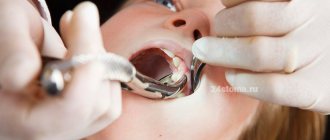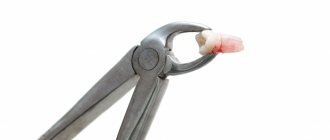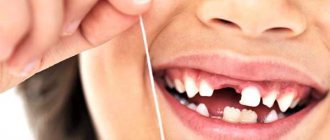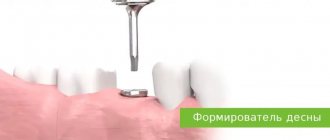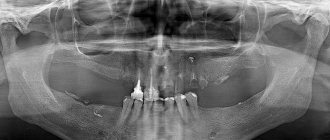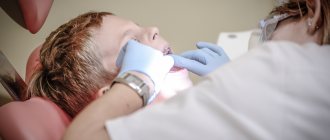In the last century, the fang was used as a talisman against damage; it was a reliable protection and is still popular today. Wolf or shark, it adorns the homes and bodies of modern people. The health of the oral area shows the energy of a person, and its diseases indicate the absence of any energy. But it happens that the physical condition is normal, but the teeth suddenly begin to fall out or break off. The doctor will tell you what to do, but along with his prescriptions, it is recommended to study the signs of a lost tooth.
What to do with a lost tooth - signs
The replacement of baby teeth with permanent teeth is a significant event in a child’s life. It is believed that at this moment the final determination of his fate occurs. The root ones, growing in place of the dairy ones, reflect the karmic problems that one will have to face in adulthood, something that a person cannot change.
Lost baby teeth should be thrown behind the stove or into the gap between the floorboards. It is assumed that a mouse will definitely come for them and take them for itself. Such a sacrifice should ensure the health and strength of the child’s molars.
It is not recommended to store it. A canine, incisor or molar of an adult that has fallen out or been removed by a dentist must be burned or buried in the ground.
Do I need to insert a tooth myself?
In case of incomplete dislocation, the crown that protrudes strongly from the gums at the scene of the incident can be carefully inserted into place without applying significant effort. This will prevent complete tooth loss, the likelihood of which is quite high. But you shouldn’t touch a knocked-out baby tooth; it’s better to quickly go to the dentist to identify possible damage to soft tissue and bone.
If a piece of a tooth breaks off, you should rinse your mouth with clean water, try to find the fragment and rush to see a qualified doctor.
Folk signs about teeth
It is generally accepted that those with large, even teeth are calm and self-confident, those with small teeth are angry and grumpy, and those with rare ones are cheerful, independent, but at the same time deceitful.
The signs state the following:
- If a child's lost baby tooth is hidden in the lining of her husband's clothes, he will never leave the family.
- The soul of a deceased person will wander between worlds until it collects all the teeth lost during earthly life.
- The presence of wisdom teeth indicates the maturity of a person. It is believed that a person who has them in full is under the protection of his ancestors.
- A sign - a tooth has broken off, warns of the possible loss of a friend.
- If they begin to crumble, it means that the person has a hidden disease that will soon make itself known.
- Creaking them in a dream is a sign that the soul is fighting evil spirits.
- If they fall out in a dream, this indicates an upcoming illness or death of a relative.
To avoid suffering from toothache, popular beliefs recommend chewing on a stone during the first thunderstorm and not spitting out the window, and doctors advise visiting the dentist’s office more often and monitoring your oral health.
What does the chipper say?
All the signs of happiness are there!
In Russia, those with a front gap were considered from birth endowed with a cheerful disposition and the ability to effortlessly conquer the opposite sex. And someone says that it’s a flaw... They don’t understand anything!
A large gap between the teeth, into which a silver coin could fit, was considered in England a sign of wealth and good luck awaiting a person. And in general, in the European tradition, rare teeth definitely promised the lucky one a life full of travel and interesting adventures. True, not too long.
Read also: How long does the temperature last after tooth extraction?
Small and closely seated teeth in the gums are considered a sign of a tight-fisted, mischievous, but amorous person.
Who will have to part with a tooth?
Complications following tooth extraction in the doctor's office are extremely rare. Much more often, sad consequences occur when it spontaneously falls out due to destruction or injury. In such cases, there are two options: restoration of dentin and enamel or removal of the tooth root.
The tooth root will have to be removed if the following symptoms occur:
- constant discomfort in the gums;
- sharp pain when chewing;
- swollen soft tissue;
- bleeding;
- the appearance of pus.
A sure sign of an inflammatory process in the gums is an increase in body temperature in the absence of symptoms of another disease.
Important! You cannot postpone a visit to the dentist, even if only one of these symptoms appears. Any suspicion that the tooth root remains in the gum and has begun to rot should prompt an urgent visit to a doctor.
What are the roots of teeth, look at the photo:
Temporary contraindications
Surgical removal of the root of a decayed tooth is contraindicated during:
- relapse of complex mental disorder;
- acute phase of ARVI;
- exacerbation of neurological disease;
- rehabilitation after a heart attack.
Doctors at dental clinics are aware of all contraindications to extraction. But not all conditions have clear clinical signs, so in order to avoid unpleasant consequences, it is necessary to warn the doctor about the ailment.
Have toothache – treat or interpret?
To avoid becoming a victim of superstitions, you should:
- give up risky projects and trips over the next month;
- resolve conflicts with loved ones and colleagues;
- remember deceased relatives;
- ask forgiveness from everyone who was unfairly offended;
- take up your favorite hobby;
- travel out of town, to the mountains or to a body of water more often.
If teeth hurt and ache unbearably, this promises a person a long illness. This sign of fate is quite understandable. Teeth reflect the condition of the entire organism, and the fact that they crumble, darken, or fall out is a signal of failures in the functioning of organs and systems.
No matter how you interpret the signs of fate, it is impossible to endure toothache. If your teeth hurt, you should contact a dental clinic. Fear of the dentist and the drill is not an excuse for inaction. Currently, doctors have dozens of techniques at their disposal that can help undergo any dental intervention. The only problem is financial limitations. In this case, help can be provided at a municipal clinic.
Dentists know only one sure thing that can protect you from the bad influence of omens: take time for yourself, make an appointment with a dentist and undergo a comprehensive examination. Failure to treat diseased teeth leads to the spread of infection in the oral cavity. This threatens pulpitis, periodontitis, gum inflammation, cyst formation and other serious problems. Treating a tooth in a timely manner means saving yourself from sleepless nights, regular use of painkillers and bad mood.
Generalized scheme for tooth extraction
The process of removing any tooth includes the following steps:
- Examination and collection of anamnesis (allergic status, information about the state of health and the dental apparatus).
- Preparation of the surgical field: treatment of the injection site, rinsing the mouth with an antiseptic.
- Anesthesia.
- Detachment of gum from tooth using a trowel.
- Loosening a tooth with forceps.
- Extracting a tooth from its socket.
- Treating the hole with an antiseptic.
- Stop bleeding with tamponade.
According to this scheme, simple removal is carried out. In some situations, for example, when a wisdom tooth or a badly damaged molar is pulled out, a complex extraction is required. Its main difference is that in addition to forceps, the dentist uses a drill to cut out bone tissue or saw the root into pieces, a chisel, a hammer and other dental instruments.
Wisdom tooth removal diagram
Getting rid of a wisdom tooth can be especially difficult. Due to its location in the posterior quadrant of the jaw, access to it is difficult. With anatomically incorrect or curved roots, which are often found in third molars, the dentist may be forced to make incisions in the gums, pull out the root piece by piece, and then apply sutures.
How to quickly help your baby
- If your child's teeth itch during teething, you should give the baby a special teether. It needs to be frozen before doing this. The ice will numb the gums and your teeth won't itch as much.
- If you have thrush, you should treat the affected surfaces with a soda solution as often as possible. In addition, antifungal drugs are effective. Therefore, if your baby has a white coating in his mouth, refuses to eat and constantly tries to scratch his teeth, you should immediately seek help from a pediatrician or pediatric dentist.
- In case of allergies, allergy tests are carried out first. Avoiding the wrong toothpaste or product will cause symptoms to go away quickly.
Thus, the problem of teeth scratching can be eliminated very quickly if the cause of this condition is correctly identified. And this requires consultation with a dentist.
How is a decayed tooth removed?
The process of tooth extraction is a simple dental operation. The difficulty increases when you need to remove the root of a tooth that is completely destroyed. Factors requiring the intervention of an experienced specialist:
- small size of the remaining crown;
- condition of surrounding tissues;
- the location of the remaining hard tooth tissues under the upper edge of the gums;
- defects of gums, roots.
Affects the complexity of the operation and whether the position of the upper or lower jaw belongs. In the upper jaw, the walls of the sockets are longer and thicker; accordingly, teeth are removed from them with great difficulty - a highly qualified dentist is required to perform the manipulation.
Wisdom teeth, from which only the root remains, are removed in the same way as ordinary molars, but in some patients, healing after such an intervention is very painful.
Examination and preparation
The procedure begins with a thorough examination and preparation of the patient. When you first visit the clinic, the doctor will take an x-ray and examine the oral cavity.
- determine the condition of the tooth, assess the extent of destruction;
- clarify the presence of allergies, contraindications, inflammation;
- choose a method of pain relief;
- draw up an operation plan;
- prepare tools.
The tools used to remove a rotten tooth root are a drill, forceps, and a set of elevators (photo).
A prerequisite is hygienic treatment of adjacent tissues. Extraction is possible only after removing stones and plaque from the molars, incisors or canines surrounding the surgical field. Immediately before extraction, the oral cavity is treated with a Chlorhexidine solution.
Anesthesia
There are cases when dentin is destroyed gradually, without inflammation, without the appearance of rot. In such situations, painless root removal is possible without the use of painkillers, however, anesthesia is more often necessary.
The choice of drug is carried out taking into account:
- age;
- allergic status;
- presence of somatic diseases;
- individual intolerance to drugs;
- presence of chronic diseases: epilepsy, diabetes;
- complexity of the upcoming operation.
The patient must notify the dentist about any deviations before the procedure begins. In most cases, the tooth root is removed under local anesthesia - one or two injections for incisors, 2 to 4 injections into the gums for molars. But if two teeth are destroyed, or the jaw is to be opened, the patient receives general anesthesia - he will sleep until the doctor finishes pulling out the tooth.
What to do before seeing a doctor
Even if a crack or chip has formed on the enamel surface, and the condition is not accompanied by unpleasant sensations or discomfort, it is recommended to visit the dental office without delay.
Before visiting a specialist, you can give yourself first aid. Such problems can be easily solved using modern techniques.
Actions that are carried out at home consist of the following steps:
The oral cavity is rinsed with warm water or saline solution. This is necessary to remove food debris, dirt, blood and chip particles. Rinsing is carried out 2-3 times a day until professional medical assistance is provided.
It is also important not to forget to brush your teeth morning and evening. Cleaning is carried out carefully, especially in the area where there is damage. If possible, a broken piece of tooth is preserved if the damage is significant.
With its help, the doctor will have the opportunity to restore the original appearance of the crown in a shorter time and with maximum efficiency. For severe pain, take any painkiller. In this case, there is no point in postponing a visit to the dentist. Medicine can only temporarily alleviate the patient's condition. A swab applied to the tooth, which is pre-moistened with a solution of novocaine, has a good positive effect. It is also recommended to apply propolis or validol to the painful area. If such a situation occurs, the injured gum is treated with an antiseptic solution and a cold compress is applied to its surface. Scratches, cuts and other damage to the mucous membranes and lips are disinfected. This will help prevent infection from entering the blood. If the root part of the tooth is broken, it is fixed into the correct position. To do this, it will be enough to simply squeeze both jaws with all your might. A cool compress is applied on top.
In the case when the main part of the crown breaks off, the dentist is contacted as an emergency, since the risk of pathogenic bacteria penetrating into the pulp increases, which provokes the rapid development of the inflammatory process.
If there are root fragments left in the hole
If the wound edges were tightened with catgut, the patient’s treatment can be considered complete. If a non-absorbable material was used, the patient will have to return to the dentist to have the sutures removed after a week. During this time, it is necessary to monitor the condition of the gums, your own sensations and notify the doctor if:
- the operated areas constantly hurt;
- throbbing pain is felt.
This means that small fragments of tooth tissue, which may have gone unnoticed during extraction, rot in the hole. The doctor must prescribe a repeat X-ray for the patient, check the quality of the operation and find out the cause of the ailment. Inaction is fraught with the development of alveolitis (inflammation of the socket), osteomyelitis, phlegmon and other serious diseases.
How to remove a rotten tooth root while preserving the crown
A tooth in which only the root remains is not always pulled out entirely. For example, if an inflammatory process develops at the root apex, but the tooth itself can still be saved, resection of the root apex is performed - partial removal.
The procedure is carried out after filling the canals, under local anesthesia. The operation is simple and lasts no more than half an hour. Its main stages:
- Anamnesis collection.
- Preparation of the surgical field.
- Anesthesia.
- Cutting the gum to access the root.
- Delamination of soft tissues.
- Sawing out a “window” in the bone.
- Cutting off the inflamed area of the root with a granuloma or cyst.
- Placing drugs into the cavity that stimulate bone growth.
- Stitching.
What to do after deletion
After any surgical intervention, you should follow all the dentist’s recommendations, as well as:
- do not eat for 2 hours after the procedure;
- cool the soft tissues of the face in the projection of the removed root;
- stop smoking for two days;
- take prescribed pain medication;
- make antiseptic applications;
- watch to see if other teeth are crumbling.
Sometimes after complex extractions, dentists prescribe antibiotics to patients. This appointment cannot be ignored - after a tooth is pulled out of the socket, a focus of infection forms in it, which can only be extinguished with the help of medications.
The following video schematically shows different methods for removing incisors, canines, molars and premolars of the lower and upper jaw.
What happens to the tooth after extraction?
Have you ever wondered what happens to a tooth after it is removed from the mouth? Surprisingly, not everything is so simple.
When a tooth is removed, there are several options for where it can go. Some recycling methods cost some money, others result in little profit, and others are just a little weird.
Read on to find out what happens to pulled teeth.
After extraction, the dentist usually places the tooth on a tray next to the dental chair. Many people may think that the tooth has reached the end of its road, but this is not so, its journey is just beginning!
1 - incinerated with biomedical waste. The Bloodborne Pathogen Standard requires that extracted teeth be placed in a hazardous waste container. The teeth are then typically collected by a medical waste management company and then incinerated with other biomedical waste. Typically, teeth that do not have any metal from previous dental work go into the oven. If a tooth has metal, it will most likely go down one of two disposal paths.
2 - They end up at a metal recycling center. If the extracted tooth has an amalgam filling material, then burning the waste will lead to the release of mercury, the vapors of which will enter the atmosphere. Because of this, regulations do not allow extracted teeth containing amalgam to be burned and they must be sent to a specialized disposal center that can remove the amalgam before disposing of the teeth.
3 - Go to dental scrap metal dealers. Dental scrap metal is not a well-known industry. The metal parts of the tooth can be melted down to be reused in the future.
4 - kept by the patient There is no rule that prohibits a dentist from providing a patient with his extracted tooth.
5 - Used for educational purposes Some teeth end up being donated to universities. Many dentists save extracted teeth so that they can be used for teaching students.
6 - Used for research purposes. Dental companies are always doing research to determine the best way to get fillings, crowns on teeth, how to make teeth more resistant to decay, how teeth react to different medications, and much more. To clarify these questions, real teeth are best suited.
7 - Sold for a high price. This is the least likely path an extracted tooth can take. It requires the patient to be known. For example, John Lennon's Tooth was purchased by a Canadian dentist for more than $30,000. The most expensive tooth in the world is considered to be the tooth of the British scientist Sir Isaac Newton, sold at a London auction in 1816 for £3,300, which is approximately equal to $38,535 at current exchange rates. The aristocrat who bought it inserted this tooth into his ring.
What can you do at home?
It is not always possible to visit the dentist on the day when a molar is cracked.
It is important to know what activities will help alleviate the condition at home:
- initial treatment of the oral cavity and gums with antiseptics (Miramistin, Chlorhexidine and others) to prevent infection;
- If you have pain, take painkillers, but refrain from taking them 6 hours before visiting the doctor;
- try not to eat food, do not touch the affected area with a brush and tongue, so as not to displace the chips;
- Avoid cold and hot drinks.
You cannot delay therapy. Even minor damage can lead to a fracture of the tooth root, the treatment of which is complex. Every day you delay a visit to the doctor is fraught with complications. A fracture of the crown of a tooth leads to an abscess and an inflammatory process in the body, which will lead to health problems.
If signs of microcracks appear, the dentist may recommend special pastes and gels. They will help restore enamel at home. The most effective:
- Gel Lakalut remineralizing. Strengthens the enamel if it is cracked, saturates it with fluoride and other valuable minerals.
- Sensodyne paste with fluoride. Regenerates enamel, not recommended if it is hypersensitive.
- ROCS Medical Minerals Gel. Enriches tissues with calcium, fluorine, magnesium.
- Colgate paste with calcium. Effective when alternating with fluoride-containing paste.
- Biorepair system with mouthguard. Designed to restore enamel and reduce its sensitivity.
Traditional methods also strengthen the enamel. You need to rinse with chamomile, oak bark, and sage herbs. Propolis, which should be chewed 2 times a day, will help treat dental tissue.
Is it possible to keep fallen and pulled out teeth at home?
The loss of a child’s first baby tooth is one of the most striking events in every family, because, as a rule, it happens on the threshold of independent life, when school is already looming on the horizon. In memory of this important stage of growing up, parents often strive to preserve the first incisors that fell out, next to the tag from the maternity hospital, the first lock of hair cut, and casts of the baby’s tiny hands and feet. However, according to popular belief, storing teeth at home is strictly not recommended. Let's try to figure out why you can't keep them at home, and whether this is actually true.
If the damage is partial
The significance of the loss of a molar fragment is an indication of an upcoming deterioration in financial situation. The greater the pain due to the injury, the more regrets you will have due to the loss of money.
Signs say that the reason for the hole in the premolar is the envy of a colleague. Trouble indicates damage, the evil eye, evil divination caused by a colleague.
It happens that part of a tooth breaks off in a person involved in a lawsuit over the theft of material assets. Experts in folk omens interpret what happened as a prediction of an unfavorable judicial decision: justice will side with the enemy.
In Tibet, it has long been believed that damage predicts a severe, long-term, debilitating illness. European healers claimed that a broken molar predicted a breakdown. Probably, a person has been competing for a long time with an opponent who is superior in everything. Soon the situation will be resolved, and not in favor of the person who lost part of the tooth.
Teeth and karma
Eastern sages have long been confident that the condition of one’s teeth can determine a person’s karma and his future destiny. Thus, straight incisors were considered a sign of well-being and the absence of any complex life conflicts, while crooked ones testified to a complex, tangled fate. Those with rare teeth were expected to have an easy disposition and the ability to please the opposite sex, while large, prominent incisors spoke of the evil and harsh character of their owner.
Among the Slavs, these parts of the body symbolized the connection with the clan, with the front incisors reflecting the connection with the parents, and the fangs and chewing teeth are the heritage passed on to the person by more distant relatives. The upper jaws symbolized male ancestors, while the lower jaws symbolized female ancestors. Wisdom teeth were held in special esteem: it was believed that they grow only in spiritually mature individuals who are under the protection of their family. The reluctance of many people, especially those of the old school, to remove them stems from the belief that, having lost this part of the body, a person also loses the spiritual protection of his ancestors. In order to prevent the outer teeth from deteriorating longer and remaining in the mouth, they were even specially charmed.
Changing a child's baby teeth was also considered a sacred event. It usually occurs around 7 years, and it is after this period that the body is completely renewed and restructured. According to Eastern traditions, at this time the child’s karma changes, and you need to behave with him as carefully and carefully as possible, setting him up for a happy future. After 7 years, by the age of 14, the child completes the change of teeth and becomes a teenager. And after another seven-year cycle, by the age of 21, a person becomes an adult, his wisdom teeth erupt, and he is given another chance to change karma.
Children and adults
Lost teeth in a child aged 6–8 years is a natural process of changing milk teeth to permanent ones. Most often, the baby loses them in the same order in which they erupted. There is no exact age when this happens, since this condition is individual for each baby, but it happens absolutely painlessly and is safe for the body.
However, if a tooth falls out in adulthood, this is a sign of a serious pathology, which is most often associated with poor hygiene, bad habits and resulting diseases. Delayed treatment and negligent attitude towards teeth care can lead to their loss.
In turn, an incomplete row leads to displacement of the teeth: they move closer together, as if filling the resulting gap. This state of affairs can lead to the following consequences:
- the bite is disturbed;
- cracks form;
- teeth become loose;
- periodontitis develops.
Absence of teeth leads to displacement of the remaining ones and the formation of gaps
There is a misconception that older people always start to lose teeth, but this is not true. The process has nothing to do with age. Teeth can be kept healthy and strong if you take proper care of them, take vitamins, give up bad habits and visit the dentist regularly.
Many mothers wonder which teeth fall out first. Depending on the child’s body, milk falls out at 6 or 7 years of age. The baby loses them in the same order in which they erupted; for example, you can see that the front tooth has fallen out if it erupted first. If the lower incisors erupted first, they will be the first to leave their place.
Signs and superstitions
Milk teeth were a separate subject of superstition. Our ancestors considered their condition to be an indicator of what problems the child would face in adulthood.
- The eruption of the first tooth meant a lot: if it was an incisor, it was believed that such a person in the future, if desired, would be able to change his fate. When the fang erupted first, it was considered a very bad omen: according to the beliefs of different peoples, such a child would face either a bleak fate or even death in infancy. Some communities even went so far as to kill such children themselves - which is why, most likely, such an ominous sign appeared among the people.
- Another very common belief concerns lost and extracted teeth. Until the 20th century, it was believed that they should be collected and buried with the owner, since in heaven a person must account for all his teeth, and if any specimen is missing, the soul will have to go in search of it. However, the fallen milk incisors and fangs could not be stored, but burned, asking the fire to give strong permanent jaws in return.
- Many of our ancestors were seriously concerned not so much by the ephemeral opportunity to look for a lost part of the body after arriving in heaven, but by the fact that it could go to a witch who would perform a magical ritual aimed at causing harm. That is why it is believed that it is strictly forbidden to keep teeth at home or make amulets out of them, because they can easily fall into the hands of ill-wishers.
- Some peoples have another sign: if a lost tooth is found by some animal, not a human, but an animal fang will grow in its place.
Taking into account all these beliefs, in Russia, Ukraine, Poland, Georgia, Bulgaria, Germany, Great Britain and other countries, a custom has developed to throw fallen children’s incisors and fangs into the fire or bury them in the ground. In Russia, it is also allowed to give them to a mouse, asking it to give the child good, strong, sharp teeth in return.
Tooth Fairy
Most often, we hear from childhood about the tooth fairy, who collects milk teeth in order to preserve the story of our growing up, but this fairy-tale character is more of a European superstition. Among the Slavs, a mouse comes running for milk “gold”, and in some parts of Russia - an unclean spirit.
One way or another, children believe that if they put a lost tooth under a pillow or on a plate of salt, they will certainly find a coin in the morning. But you and I know who the true thief of the precious loss is.
By the way, in those places where the extraction of teeth is transferred to the shoulders of evil spirits, it is customary for parents to make the exchange before midnight. Otherwise, something bad might happen to the child. Signs say that the connection with the tooth remains even after its loss, which gives black magicians grounds for witchcraft.
Scientific approach
If folk wisdom clearly indicates that it is impossible to keep fallen or pulled out teeth at home, then modern science has a different opinion. From a hygienic point of view, they are absolutely safe, since they do not contain any traces of flesh. They can be equated to such parts of the human body as nails and hair: esoteric beliefs prescribe burning them, since through these biological materials one can influence their former owner, but the vast majority of citizens still throw them in the trash.
However, given the latest scientific discoveries, thoughtless disposal of baby teeth is a very irrational act. Recently, British scientists began extracting stem cells from their pulp. Frozen material can be stored in a special jar for about 30 years and, if necessary, used to treat cancer, diabetes, stroke and other serious diseases.
Unlike materials obtained from umbilical cord blood, stem cells from baby teeth are more viable and are used to treat not only blood diseases, but also diseases of internal organs, including the brain. In addition, they can be extracted not only at birth, when there are already enough worries and expenses, but at a later age: from 6 to 12 years.
Causes of tooth loss in adults
If an adult’s tooth falls out, this is not only an aesthetic problem, but also a signal of possible diseases. The causes of these problems can be varied, but the most common are:
- infectious gum diseases;
- improper cleaning of the oral cavity;
- stress;
- smoking;
- mechanical injuries due to specific work or sports.
All of these factors can lead to periodontal disease, which is a major factor in root destruction and gum disease. Many athletes lose part of their jaw row due to neglect of protection. So, hockey players can get injured without a helmet, and boxers can get injured if they don’t use a mouth guard.
Sometimes people lose teeth due to too advanced caries. This disease is accompanied by severe toothache and destruction of enamel.
Tooth loss is dangerous because a cavity forms in place of the lost tooth, which becomes a microhabitat for harmful bacteria. Together with food, you can accidentally introduce an infection into the wound, which will be dangerous due to its proximity to the brain. In addition, the loss of one tooth can often lead to the loss of others. Due to the resulting hole in the row, under the mechanical influence of the jaws, the remaining teeth begin to loosen, since there is no natural support.
Therefore, even if the cause of the loss was age and not illness, you still need to contact a specialist, since the remaining fangs can still be saved by strengthening them with prostheses or artificial implants.
